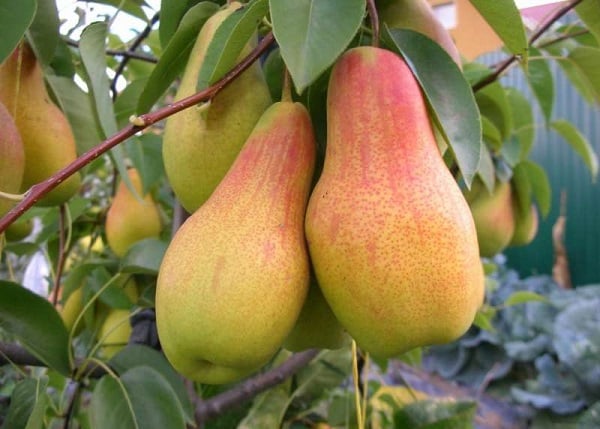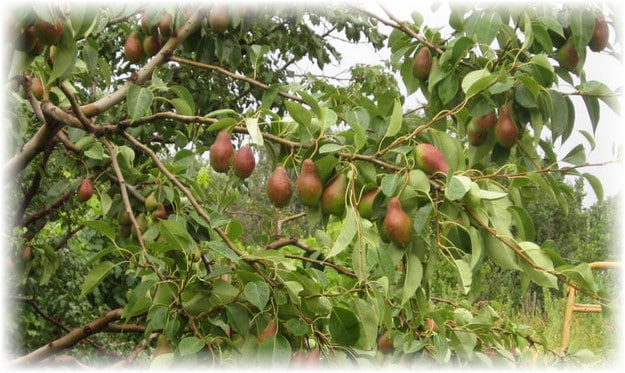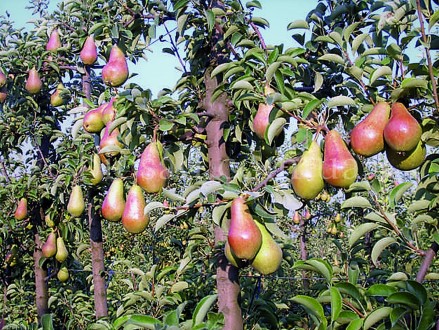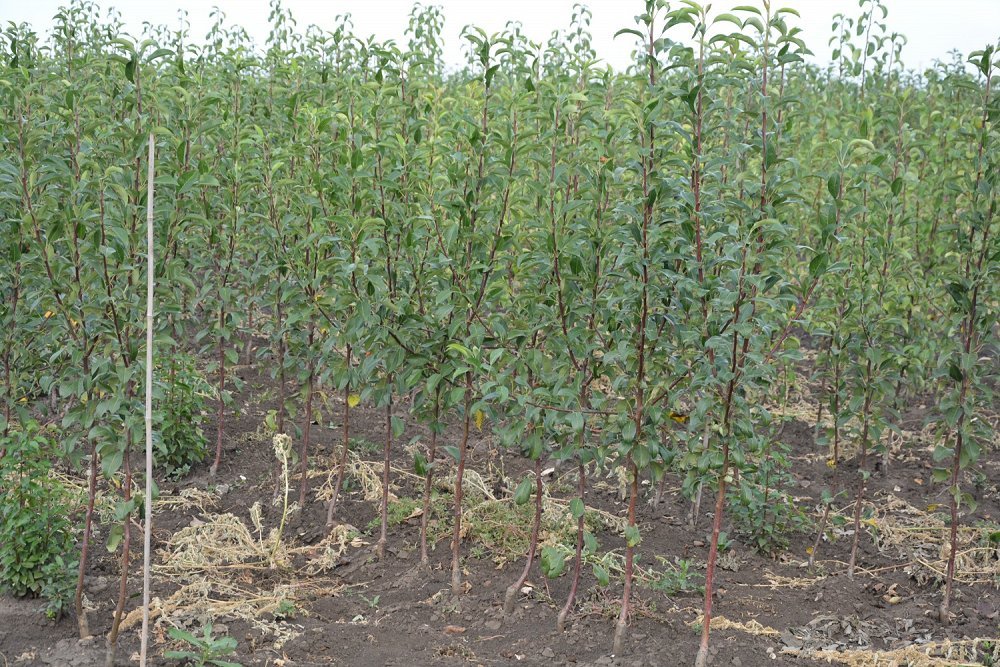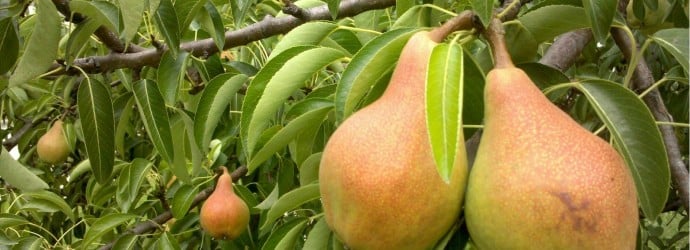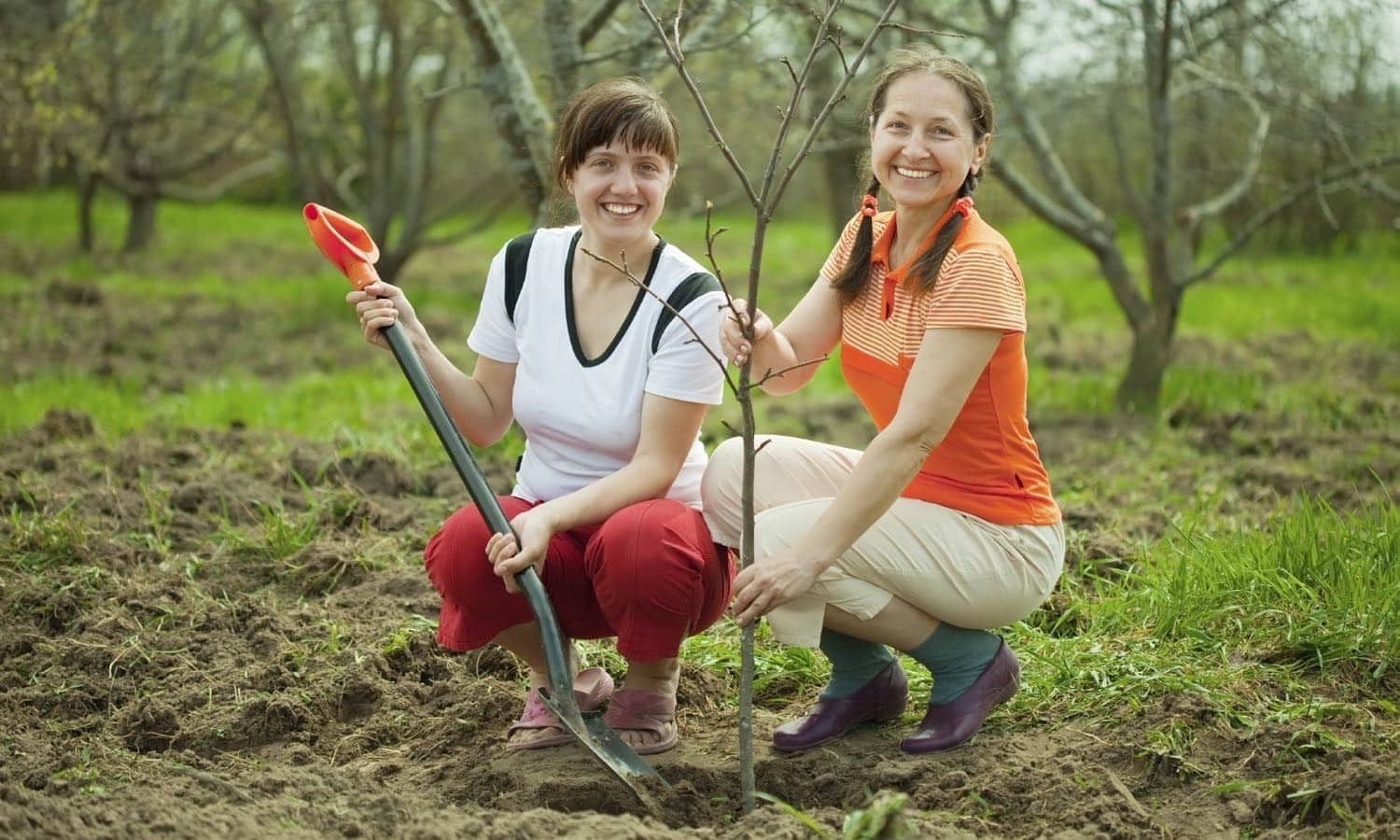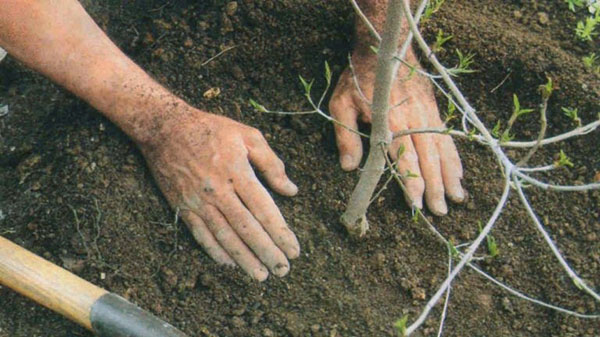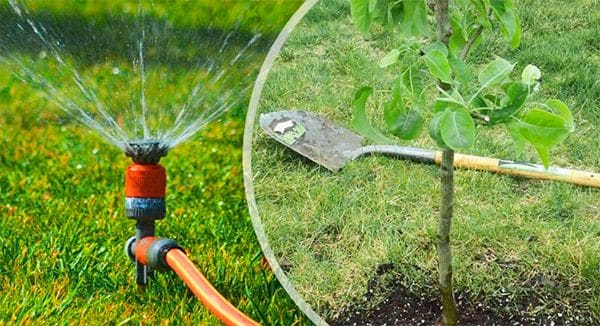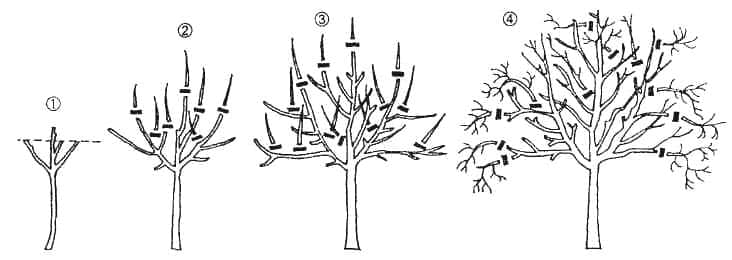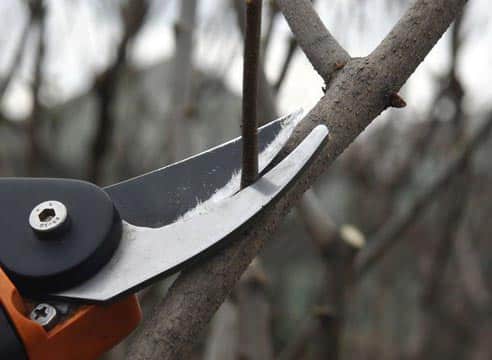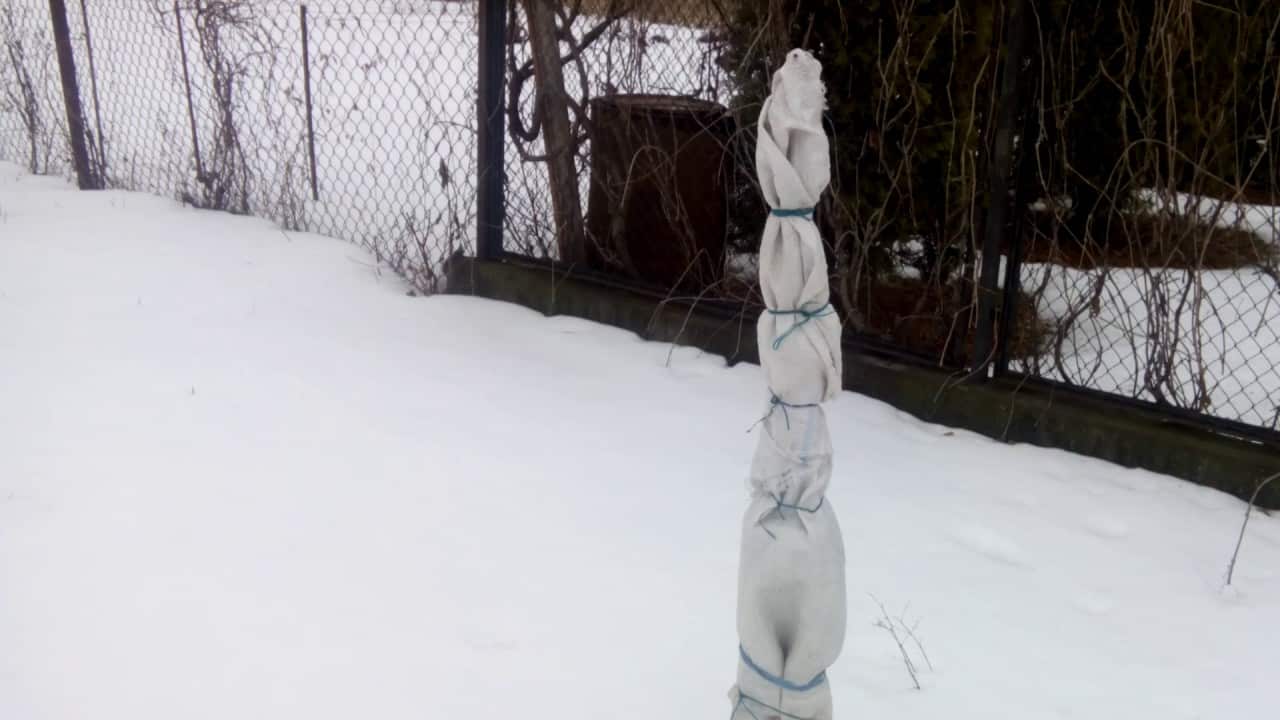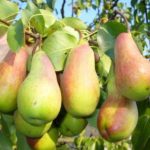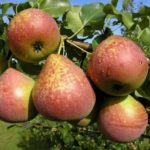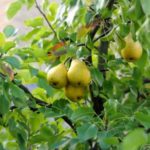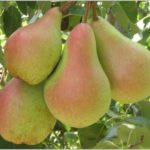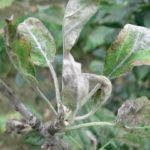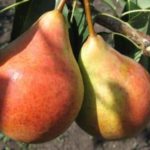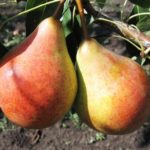Specialists from the Kazakh Institute of Horticulture worked on breeding the Talgarka pear. When pollinating the seeds of Forest Beauty, breeders used several varieties of the crop. All of them had excellent technical characteristics, which were transferred to the Talgarskaya Krasavitsa pear. Low fruit trees began to be grown in the North Caucasus, cultivated in the Stavropol region and some regions of the Central Black Earth region.
- Description and characteristics of the variety
- Pollination of the variety
- Pollinator varieties
- Tree height
- Lifespan
- Winter hardiness
- Productivity
- Cyclicity of fruiting
- Self-fertility
- Disease resistance
- Advantages and disadvantages of the Talgar Beauty pear
- Reproduction methods
- Cuttings
- Air layering
- How to plant a plant correctly?
- How to choose a seedling
- Choosing a place and time for landing
- Digging a planting hole
- Pear planting technology
- Caring for the Talgar Beauty
- Watering intensity
- Feeding
- Trimmings
- Crown formation
- Regulatory
- Supportive
- Sanitary
- Rules for pruning
- Preparing for winter
- Diseases and pests
- Characteristic diseases of pear
- Insect pests and their control
- Ripening period and harvest
- Which regions is the variety best suited to?
Description and characteristics of the variety
The Talgarka or Almaatinka pear has a dense pyramidal crown and is of medium height. The main shoots extend from the peeling trunk, which has a gray tint, at right angles. Flexible and even branches are covered with leaves:
- dark green color;
- oblong shape;
- with jagged edges.
In the second ten days of May, large white flowers appear on the pear. The buds look like a cone; an ovary forms on the ringed branches. The fruits ripen in September. The tree produces its first fruits at the age of 4 years.
The pear, shaped like a bottle, is covered with a glossy skin and decorated with a scarlet blush on the southern side. Under the skin you can see small green dots.
The fruits weigh 150–160 g, the weight of some specimens approaches 250. When ripe, the dense, crispy pulp fills with juice, acquires a creamy color, and a pleasant sweet taste, which is estimated at 4.6 points.
Pear Talgarskaya Beauty is rich:
- sugars;
- vitamin C;
- organic acids.
The fruits are held on a curved stalk; there are so many of them that the branches of the tree bend to the ground.
Pollination of the variety
In order for the Talgar Beauty to produce a good harvest, other pears that are self-fertile must be planted next to it.
Pollinator varieties
When breeding Almatinka, specialists from the Kazakh Research Institute crossed the seeds of the Forest Beauty with seed material from other pears. They can be used as a pollinator. The medium-sized Goverla tree forms a compact crown, fits well with other plants, and is not affected by fungal diseases.
The unpretentious self-fertile variety Conference has high technical characteristics and blooms at the same time as Talgarskaya Krasavitsa. Lyubimitsa Kappa and Kucheryanka are good pollinators for Almaatinka.
Tree height
The pear, which has a wide crown with hanging branches, belongs to the medium-sized varieties of the crop. Despite the fact that the height of the tree barely reaches 3 meters, it pleases with a stable good harvest.
Lifespan
Like any other fruit crop, Talgar Beauty must be looked after - pruned in a timely manner, removed dried branches, watered in hot weather, and prevent the development of diseases and pest invasions. And then the tree will live not 10, but about 30 years, and will delight you with an abundance of large and sweet pears.
Winter hardiness
Talgar Beauty leaves after frosts from 25 to 30 ° C, but if they do not last for a long time. Pears are grown in the southern regions and bear fruit in the Moscow region.
Productivity
Talgar Beauty is cultivated on an industrial basis, up to 20 tons of fruit are collected annually from 1 hectare, up to 6 buckets of pears ripen on one medium-sized tree.
Cyclicity of fruiting
Talgar Beauty rewards with fruits every fall, provided that at least one pollinator grows nearby. The first pears appear on the ringed branches of seedlings 4 or 5 years old, and their number increases with each season.And only from the 20th there is sometimes a cyclicity in fruiting, but with good care, prevention of diseases and pests, fruits are set on an adult tree and ripen every autumn.
Self-fertility
Talgar Beauty blooms profusely in the spring, but in order to get a high harvest, other trees of this crop need to be planted next to it, which act as a pollinator. The pear variety bred at the Kazakh Research Institute is self-sterile.
Disease resistance
Talgar Beauty has good immunity. The tree is rarely affected by bacteria and fungi, and practically does not suffer from scab. The need to spray a plant with insecticides against pests arises infrequently.
Advantages and disadvantages of the Talgar Beauty pear
The autumn-ripening variety, bred in Kazakhstan, adopted the best technical characteristics from its closest relatives.
Its advantages include:
- excellent productivity;
- resistance to drought and frost;
- presence of immunity to scab;
- regular fruiting.
Pears have a pleasant taste, do not spoil for a long time, and do not lose their presentation when transported over long distances.
The disadvantages of the variety include the need to place a pollinator. When overripe, the fruit pulp acquires a brown tint.
Reproduction methods
You can grow pears at your dacha using the vegetative method - buds, air layering, and seeds. But with the latter option, the seedlings develop poorly and it is difficult to get a good harvest.
Cuttings
To propagate Talgar Beauty, many gardeners prepare green branches and treat them in a solution of a growth stimulant. When roots form, the shoots are planted in the ground. In mid-latitudes, pear cuttings are harvested in the summer from healthy and fruit-bearing trees.
Air layering
With this method of propagation, the lower branch of a young plant is bent and sprinkled with soil. Since the shoots of the Talgar Beauty are located high, a bag of soil is attached to the shoot. Air layering is nurtured for 2 years, although the roots appear in the first season, they are still too weak and require regular watering, mulching, and covering for the winter.
How to plant a plant correctly?
In order for the pear to quickly grow and develop well, you need to comply with the basic requirements, and be sure to decide on the optimal place where it will grow.
How to choose a seedling
It is better to purchase the Talgar Beauty tree from a nursery. The thickness of the trunk should be about 1 cm. Pears aged 1 or 2 years with a height of 1.2 to one and a half meters take root well. There is no need to buy a plant whose roots are covered with growths and whose bark is wrinkled.
Choosing a place and time for landing
Talgarskaya Beauty loves loams and takes root well on sandy loam soil with neutral or low acidity. Peat bogs and areas where groundwater is located closer than 2 meters from the surface are not suitable for growing pears. Fruit crops need a lot of sun.
In mid-latitudes, pear trees can be planted in April and September so that they have time to establish themselves before winter. In the southern regions, hot and dry weather begins early; the best time for such work is October.
Digging a planting hole
Having selected an area for a pear, you need to prepare a hole one meter wide to a depth of 50 cm. The soil is removed in layers and fertilizer is applied. The top fertile soil must be mixed with compost, sand, superphosphate and potassium salt added.
You should dig a hole 3 weeks before the plant is supposed to be placed, loosen it well, and make cuts on the sides.This promotes better air flow. Pebbles and brick chips are poured onto the bottom of the hole, creating a drainage layer.
Pear planting technology
Before the procedure, the roots of the tree are soaked in water, and then dipped into a clay mash for several minutes, and dry shoots are cut off using pruning shears. Planting is carried out in several stages:
- A wooden peg is driven into the hole, approximately 10-15 cm from its middle.
- A fertile layer of soil is poured onto the bottom in a mound.
- The pear is placed in the hole, leaving the root collar 30 mm above the surface level.
- Fill the soil, making sure that no voids appear.
After planting, the soil must be thoroughly compacted, a trench is dug around the seedling, 3 buckets of water are poured out, and covered with humus or peat. The tree is tied to a support.
Caring for the Talgar Beauty
In order for the pear to take root well and please you with its fruits, after planting you need to take care of it - prune it in a timely manner, carry out disease prevention, and do not forget about fertilizing.
Watering intensity
To ensure that the seedling receives the required amount of moisture, grooves are dug around it through which water will be supplied. After watering is completed, they are covered with mulch. The soil needs to be moistened to a depth of half a meter. It is also possible to install a system with rotating nozzles. An adult Talgar Beauty must be watered when it fades and at the end of autumn.
Feeding
After planting, the tree has enough nutrients. The next year, mineral complexes are already added to the holes, and once every three years the pear is fertilized with organic matter. After flowering, Talgar Beauty is sprayed with a solution prepared from 20 g of urea and a bucket of water.
Trimmings
In order for the pear to grow and develop well, starting from the age of two, they get rid of the shoots that go inside the trunk, and remove dried and diseased branches.
Crown formation
To regulate the vigor of growth and speed up the fruiting period of the crop, they resort to several types of pruning of young plants, and rejuvenate old trees. The crown is formed in the initial years of a pear’s life from a central trunk, 6 first-order shoots, 8 second-order shoots and fruit branches. In the southern regions, a round type of crown is common, in other regions it is sparsely layered.
Regulatory
This type of pruning is performed in order to prevent overloading of the wood, eliminate thickening of the pear, and improve the light conditions. It begins by removing dried and damaged branches. In young neglected trees, the crown is thinned out, in adult plants, the shoots that have gone beyond its limits are shortened.
Supportive
To prevent the Talgar Beauty from becoming overloaded with fruit and bending to the ground, large branches are regularly pruned. This procedure helps to maintain the pear in normal condition for a long time.
Sanitary
Every year, gardeners and summer residents remove dry shoots affected by pests and diseases. Control pruning allows you to accelerate the growth and development of a tree and improve its productivity. You can also revive old pears.
Rules for pruning
Knowledgeable gardeners do not recommend forming a crown or shortening shoots in the fall so that the Targar Beauty does not freeze. The procedure should be started in early spring, when the thermometer leaves + 4 °C behind, and the work must be completed before the buds open. You can’t cut pear branches in the summer, it will weaken and its life cycle will be disrupted.
Preparing for winter
Although the Talgar Beauty can withstand frost, the trunk and skeletal shoots of the young tree are wrapped in material that allows air to pass through. The roots are covered with pine needles, peat or compost with a layer of no less than 15 cm. For the winter, an adult pear is removed from dried branches and the trunk is whitened.
Diseases and pests
Talgar Beauty does not suffer from scab and has good immunity to bacterial infection. However, lack of normal tree care, rainy and damp weather provoke the activation of fungi and viruses.
Characteristic diseases of pear
Most often, Talgar Beauty is affected by cytosporosis, when the bark dries out, and rust, which begins with the appearance of red spots.
To prevent the occurrence of diseases:
- Fallen leaves and mummified fruits are collected and burned.
- When digging, the soil is treated with anti-fungal preparations.
- The sections are lubricated with garden varnish.
- Twice during the growing season, pears are sprayed with Bordeaux mixture, and in early spring with Nitrafen.
When signs of cytosporosis appear, the infected areas are cut back to healthy tissue. All dry branches are removed.
Insect pests and their control
The seeds of the Talgar Beauty are attracted by the pear moth to get to the seeds, the larva gnaws through the tunnels, and the fruits quickly deteriorate. During the summer of butterflies, hunting belts are put on the tree. For the winter, they carefully dig up the soil in the tree trunk circle, and after the flowers fall, the pear is sprayed with the preparation “Agravertin”.
The pipeworm infects the leaves of the plant, laying eggs in them. You can cope with it by treating trees with solutions of Aktara, Decis, and Calypso.
Ripening period and harvest
Pear of Kazakh selection belongs to the late varieties of the crop.The fruits ripen in September. They are picked by hand in a slightly unripe form, taken to a cellar or basement, and put in boxes. Fruits do not spoil until the New Year and last until February.
Which regions is the variety best suited to?
Although the Talgar Beauty can withstand frost, it is best adapted to the climate of the southern regions. The variety is cultivated on an industrial basis in the Stavropol and Krasnodar Territories. The pear is grown in the Central Black Earth region; it does not take root in the north, just like in Siberia.

